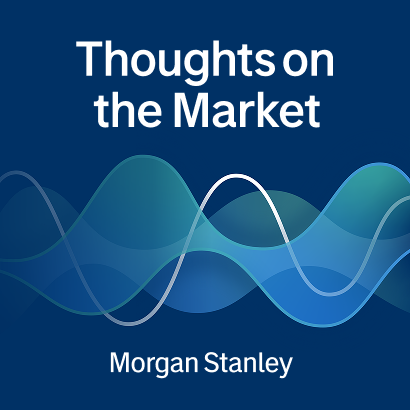Although the banking industry was at the epicenter of the previous global recession, the coronavirus pandemic now positions the industry to play a vital role as a shock absorber for the economy.
As world faces one of the deepest economic shocks on record, the banking sector will undoubtedly see its share of challenges, alongside many sectors. However, corporate and investment banks are already appearing to be more resilient than other segments of the economy and could be far better positioned to navigate a downturn.
“The wholesale banking industry was at the epicenter of the last financial crisis," says Betsy Graseck, Global Head of Banks and Diversified Financials Research at Morgan Stanley. “But over the last 10 years the industry has built up capital and liquidity buffers that today put it in a position of sufficient strength.”
At the same time, the industry also stands to benefit from what is likely to be a defining trend of the next cycle: a growing emphasis on climate change and sustainability. “Banks as allocators of capital and managers of credit risk will be in the thick of the action in the next several years," says Magdalena Stoklosa, Head of Research for European Banks and Diversified Financials.
In a new collaborative Blue Paper, Morgan Stanley Research and consultancy Oliver Wyman examine how the industry can and should address near-term risks, shore up potential weak points and zero in on strong long-term opportunities. But they caution that, while this crisis may not hit wholesale banking as hard as the last downturn, it will likely reveal performance gaps that some institutions—namely those with high fixed costs—will need to address.
More Resilient This Time Around
Thanks to sweeping changes made in response to the global financial crisis, the corporate and investment banking industry was in relatively good shape heading into the COVID-19 pandemic. “Stricter capital requirements and annual stress testing since the financial crisis is now positioning banks to play a vital role as a shock absorber for the economy, providing much-needed liquidity and risk capital into the system," says Graseck.
To highlight the path forward, as the world wrestles with the coronavirus pandemic, Morgan Stanley and Oliver Wyman outline three different scenarios for the next three years. The central thesis assumes six months or more of uncertainty and disruption around the pandemic, driving a global recession that extends into 2021. All told, wholesale global banks could see an 8% earnings decline in 2020, with increased trading activity helping to offset depressed deposit-taking businesses and elevated credit losses.
The other two scenarios consider a more rapid recovery—a bull case in which earnings decline 10% in 2020 but grow 5% to 15% annually in the following two years—and a bear case in which a deep global recession results in losses in 2020 and subdued earnings in 2021.
But even the worst-case scenario may not be as devastating as the financial crisis was on the banking sector as a whole. “While each scenario represents a painful blow, none is sufficient to seriously dent capital ratios," Graseck notes. In fact, the stronger and more agile wholesale banks could emerge from this difficult stretch with improved standing .
Morgan Stanley Research scenarios incorporate significant incremental credit losses that range from 50 to 550 basis points for the banking book
| Banking Book | Trading Book | |||
|---|---|---|---|---|
| Additional Loss Rate | Provisions (Billions) | Additional Loss Rate |
Provisions (Billions) | |
| Rapid Rebound | 0.50% | 30-50 | <10 bps | <5 |
| Global Recession | 2.25% | 100-150 | 10-50 bps | 15-25 |
| Deep Global Recession | 5.50% | 200-300 | 50-100 bps | 50-70 |
Crisis Reveals Performance Gaps
The banking industry is on better footing as a whole, but the COVID-19 crisis is likely to reveal profound performance gaps, with some institutions likely withering from the earnings drought. Under Morgan Stanley's base scenario, average returns between 2020 and 2022 could drop as low as 4% to 5% for the industry, but for lower quartile banks, those earnings could dip to zero.
One of the biggest culprits is high fixed costs. Despite cost-cutting efforts, many banks continue to operate with narrow margins and limited capacity to deal with a downturn in earnings.
Moreover, many institutions will struggle to significantly reduce expenditures. Only 20% to 30% of the cost basis is flexible today, and Morgan Stanley believes just 5% to 10% could be trimmed in the near term. At the same time, banks’ technology and regulatory expenses are fixed, and many of the largest banks have committed to keeping employees on their payrolls, at least through 2020.
Still, investors can tune in to key differences, such as business mix. Institutional franchises have benefited from record volatility and trading volumes. In contrast, corporate banking has been facing acute earnings pressure. Low interest rates reduce margins in transaction banking, and elevated volatility has muted corporate finance activity. However, banks with the wherewithal to ride out these declines could use the current environment to deepen corporate banking relationships and tap into higher-margin segments.
Another differentiator is the extent to which banks have made meaningful progress in digital transformation by upgrading data management, migrating to cloud-based platforms, and redesigning and automating their operational processes. Banks will need to work behind the scenes to streamline their operations and reduce cost structures, while competing with—or investing in—fintech, by seeding, scaling and spinning off new service propositions.
The biggest opportunity for cost cutting is in Corporate Banking followed by Markets. Reduced opportunity in Investment Banking.
Looking Ahead to the Next Cycle
At the same time that transformation is happening within banking, the industry has an opportunity to play a leading role in what Morgan Stanley and Oliver Wyman consider one of the biggest trends coming out of the crisis: an even greater emphasis on environmental, social and governance (ESG) issues, specifically, sustainability.
Investing in ESG has been gaining traction over the past decade, but the COVID-19 crisis could elevate it to a new level. Banks that take a proactive role in supporting the transition to a low-carbon economy could stand out from the crowd. “Their response to climate change will be one of the key drivers of their own financial performance longer-term and, with that, an increasingly important factor in share valuation," says Stoklosa, adding that banks that move too slowly could face regulatory and transition risks in their lending portfolios.
Impact of ESG growth on banks
(Impact on RoE, percentage points)
| Leaders | Laggards | |
|---|---|---|
| Risks Gradual reduction in revenues from energy sectors; increase in cost of risk |
- 0.5 ppt | - 0.5 to - 1 ppt |
| Opportunities Transition financing, green financing, ESG investing products, analytics and advisory |
+ 1 ppt | - 1.5 ppt |
| Total Impact on RoE | + 1 ppt RoE | - 2 ppt RoE |
This is where challenged European banks could regain lost ground. As it stands, European banks appear to be more vulnerable to near-term earnings droughts—due in part to higher fixed costs—but an uptick in ESG could change that dynamic.
“We see comprehensive work being done in Europe, not only on operational risks, but in assessing lending portfolios' alignment with the transition to a low-carbon economy," Stoklosa adds. “We see a first mover advantage and an opportunity to claw back share."
For more Morgan Stanley Research on the latest trends and outlook for the financial sector ask your Morgan Stanley representative or Financial Advisor for the BluePaper, “Steering Through the Next Cycle" (Apr 8, 2020), a collaborative report between Morgan Stanley Research and Oliver Wyman. Plus, more Ideas from Morgan Stanley thought leaders.



